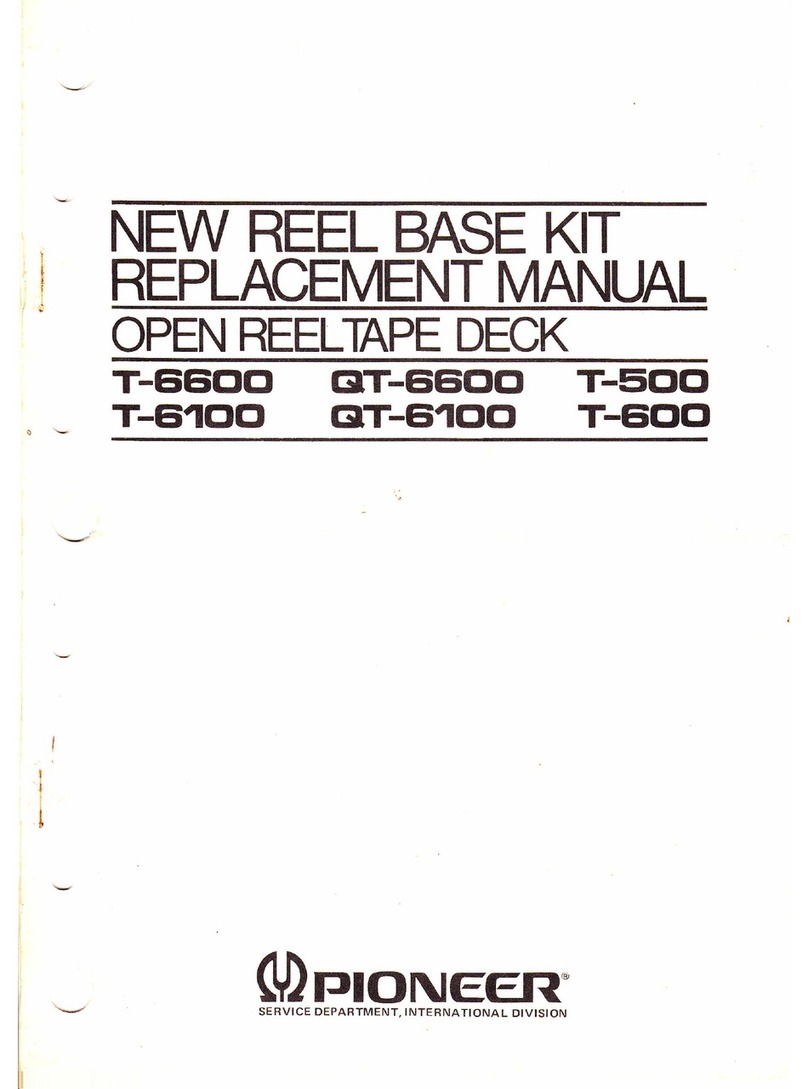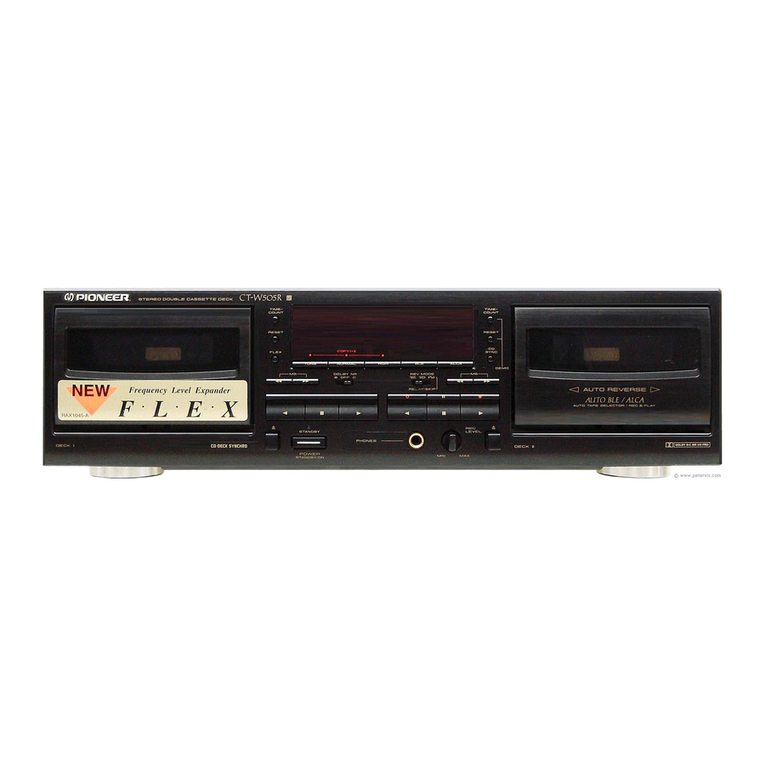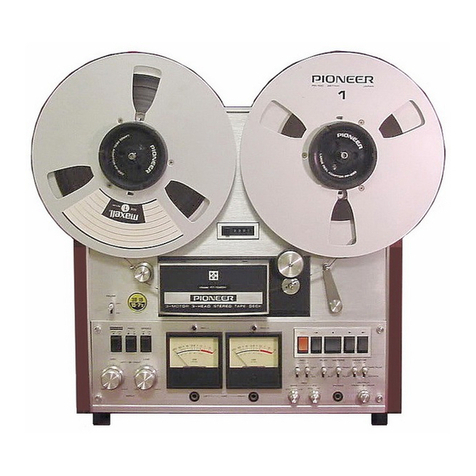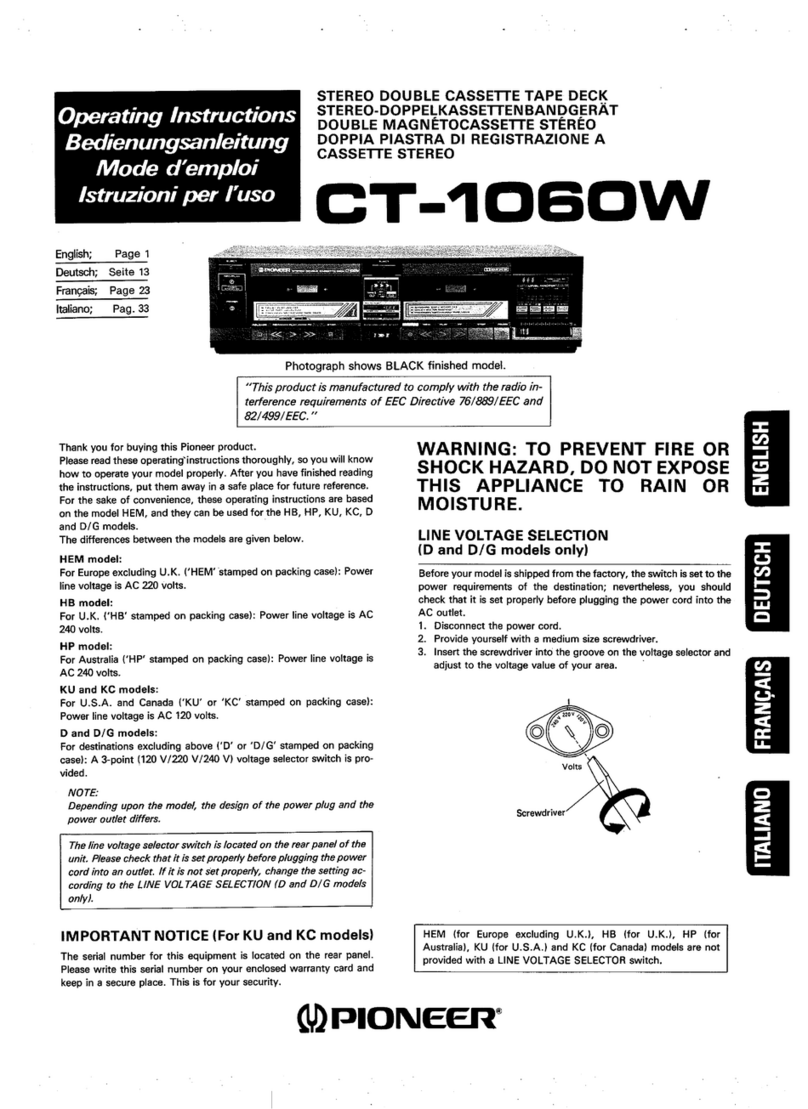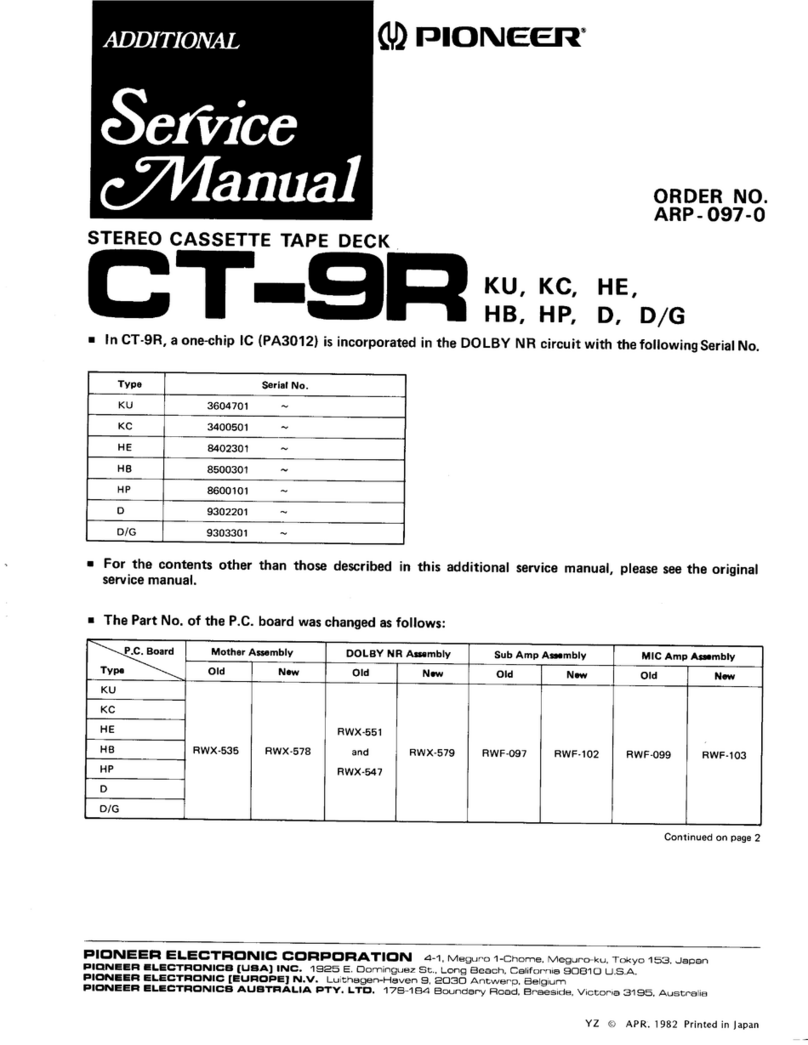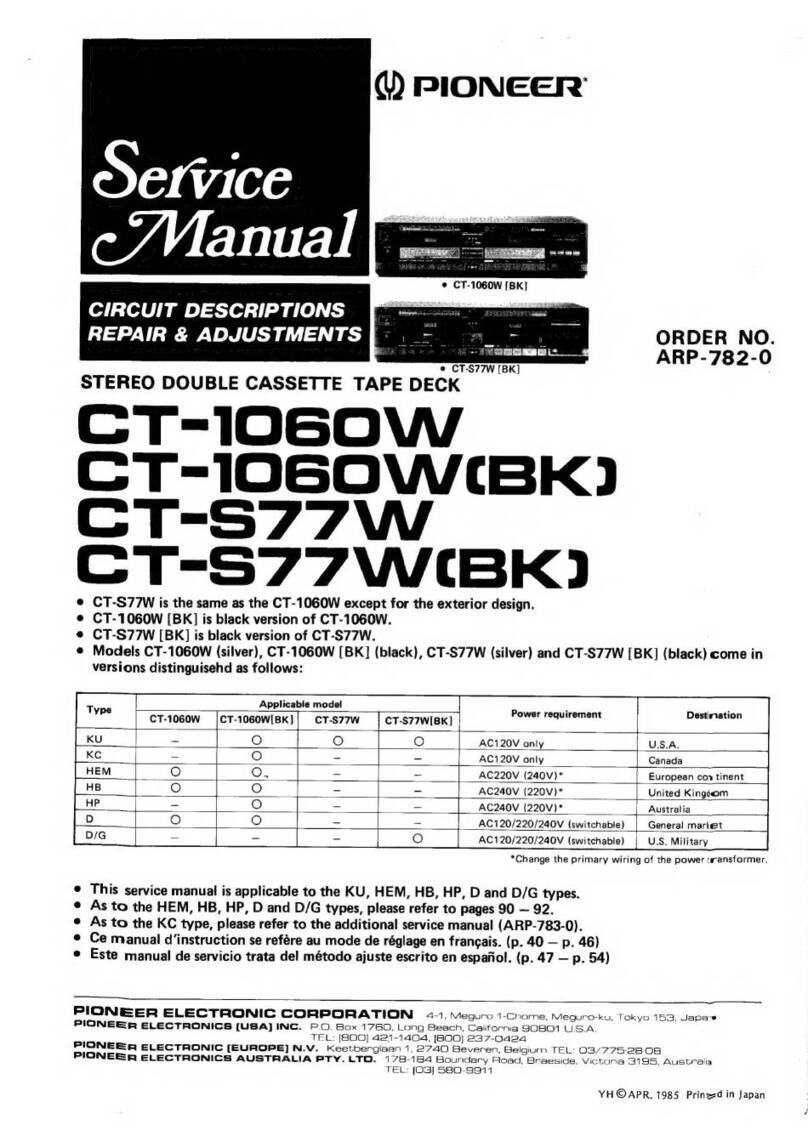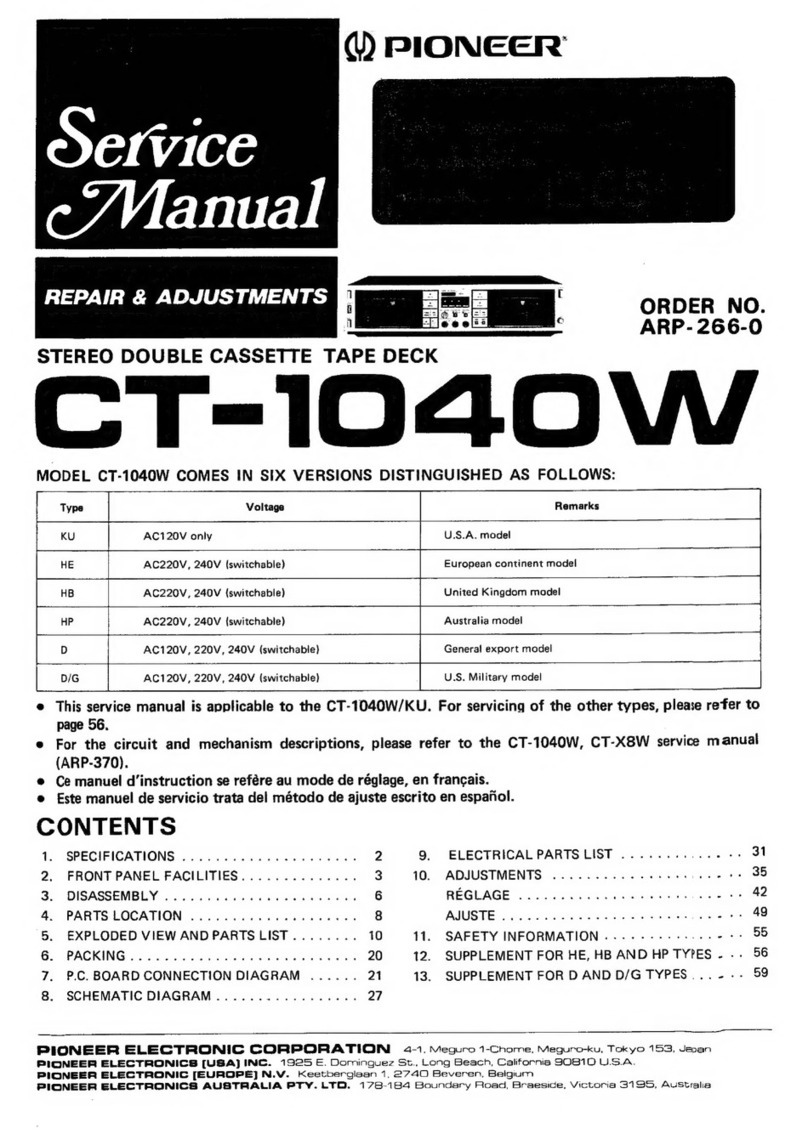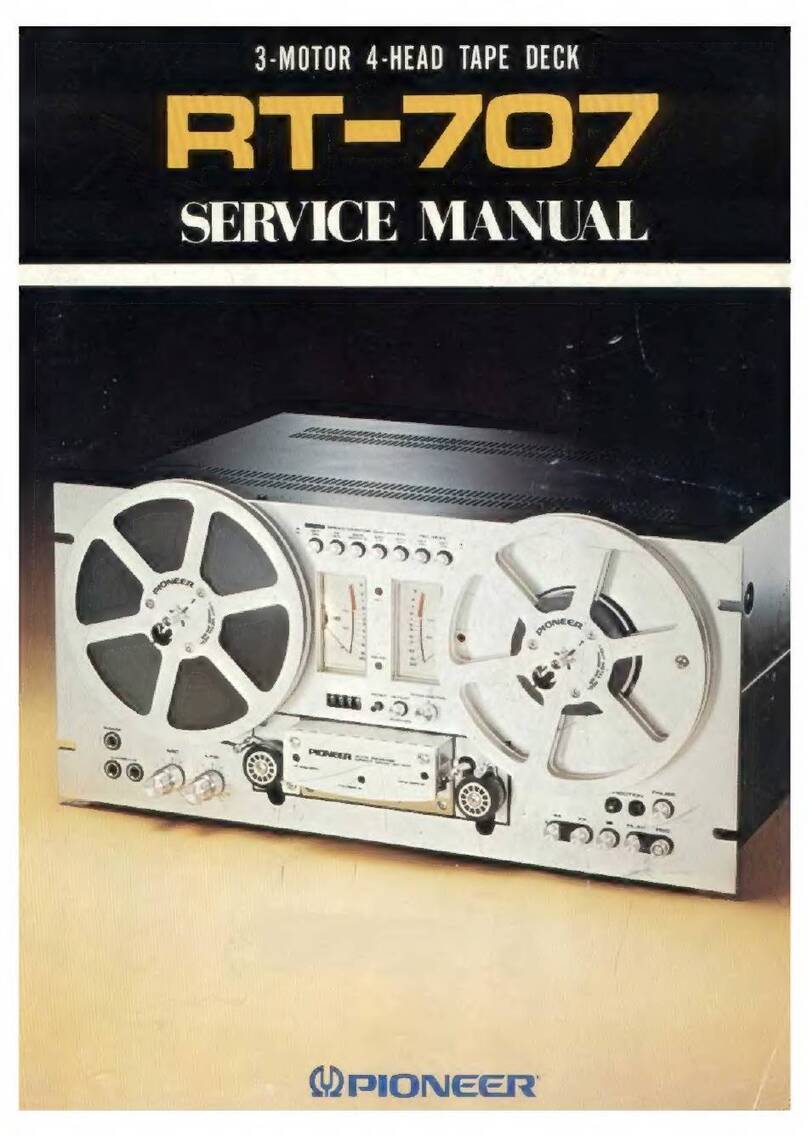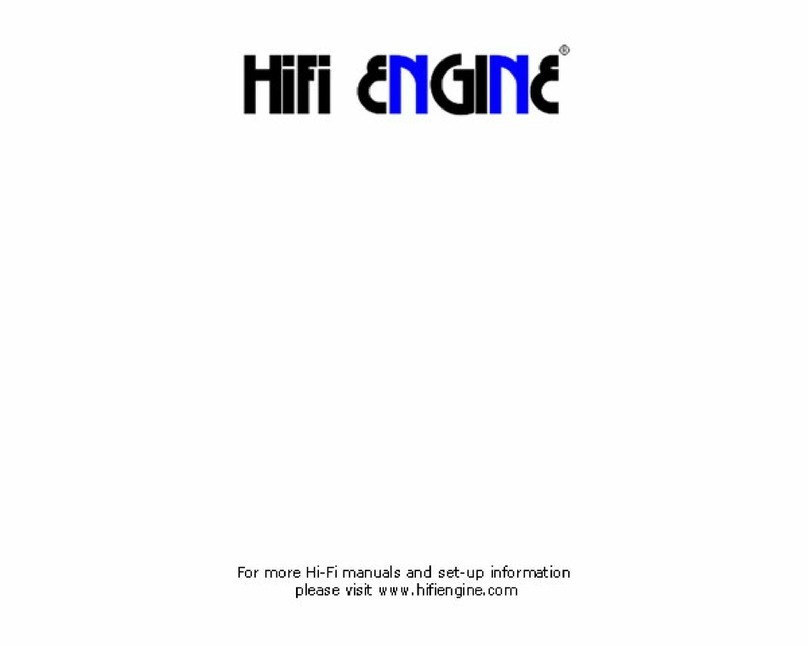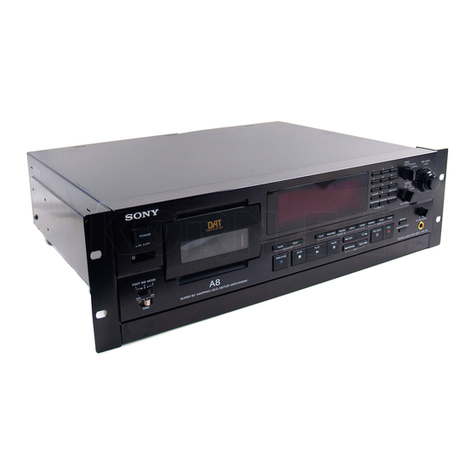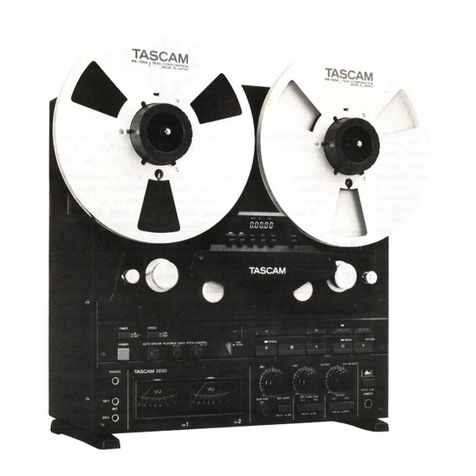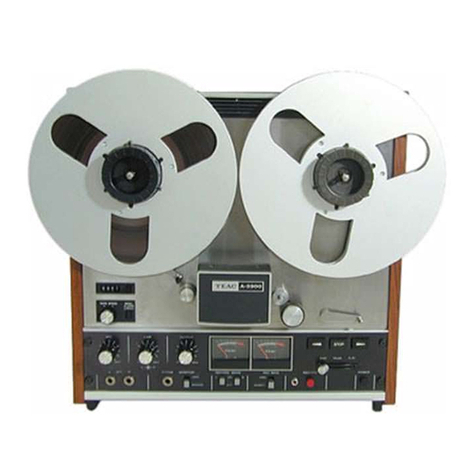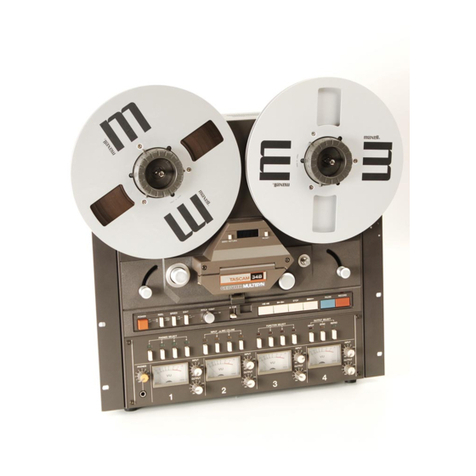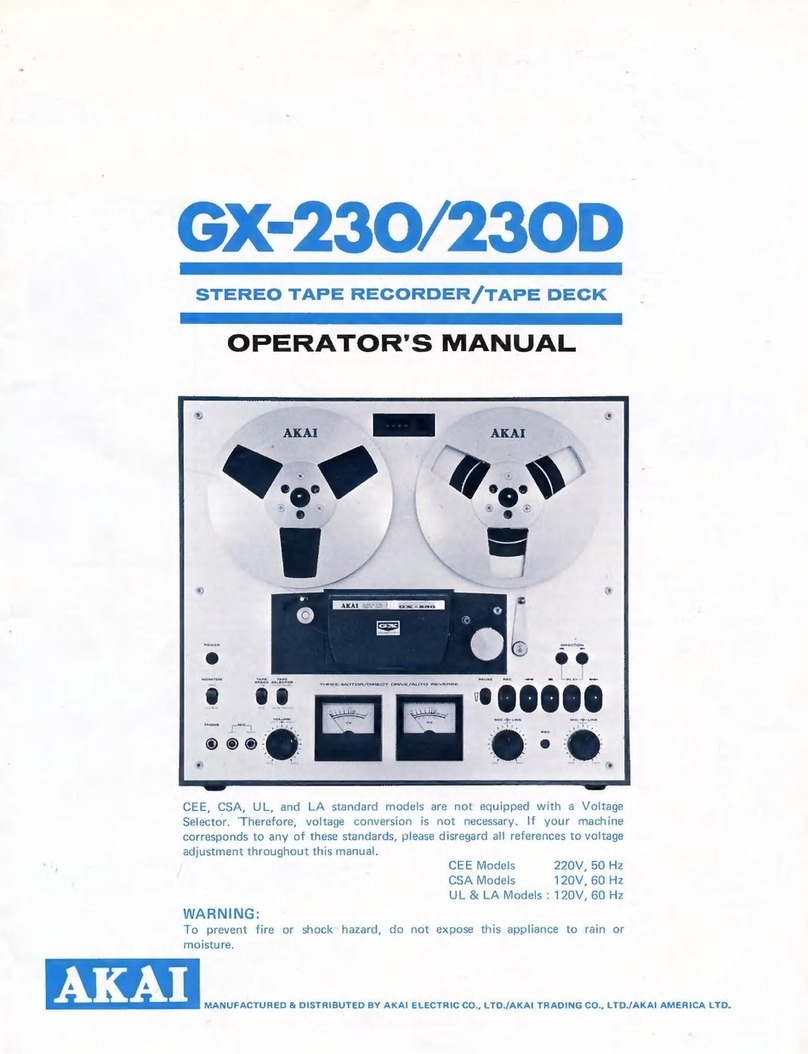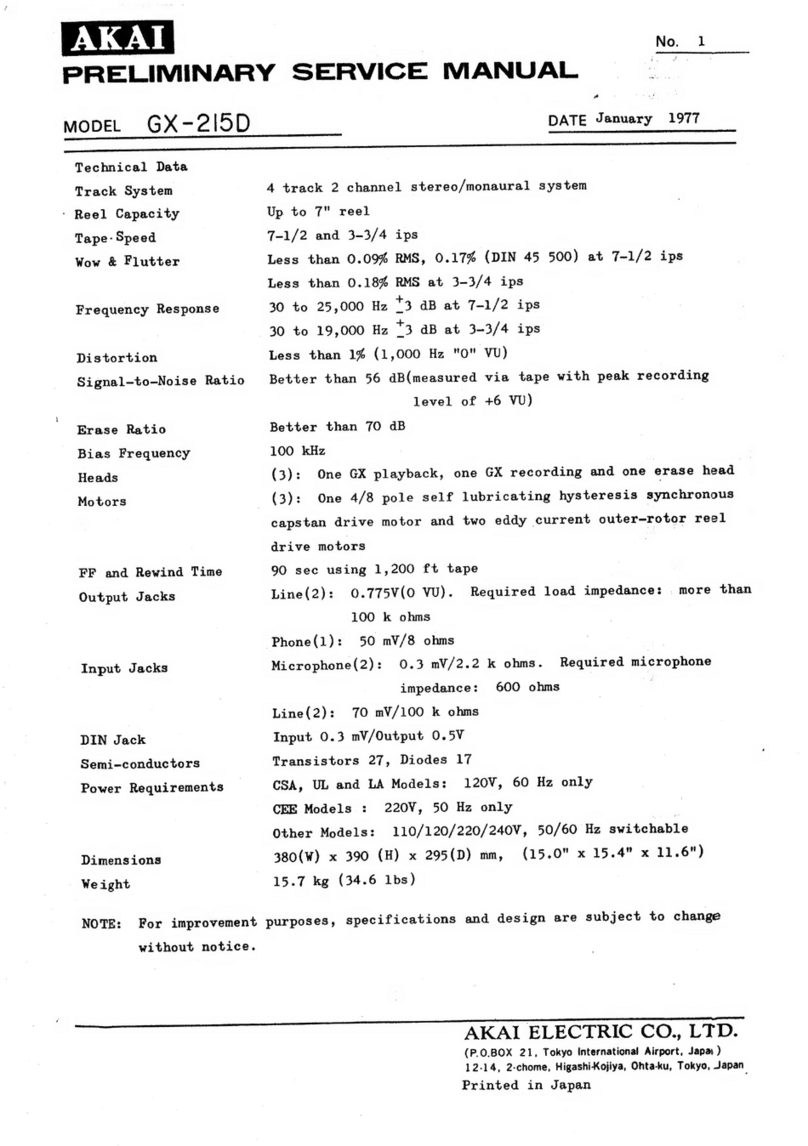
o Tape Protection at PLAYBACK
lmmediately From F.F. (or REW)
( Fig. 8)
If the PLAY button is pressed while the deck is
in the FAS1' FORWARD (or REWIND) mode,
the tape is brought to a halt briefly before
resuming travel at the specified speed, in order
to protect it.
As shown by Fig. 8. the circuit is structured
mainly around Q603 and Q604.
1. The base of Q604 is biased via R60? -
R606 - D606 - 510-2 (S11-2) while the
deck is in the FAST FORWARD (or
REWIND) mode. Q604 is thus ON and
relay RL601 is operative.
2. The base of Q603 is connected via R610 to
the collector of Q004. When e604 is ON,
the base of QG0B is reverse biased, and
Q603 is OFF.
3. C619 is charged via R604 (C618) - C619
- R606 - D606 - 510-2 (S1L-2).
4. When the PLAY button is pressed, 512-1
goes over to PLAY, S10-2 (S11-2) return
to their OFF positions, and the base bias
loop for Q604 (in step 1. above) is broken.
The charge accumulated in C61g, however.
Forms the base current of e604 and keeps
it on maintining the relay RL601 opera-
tive.
5. Even if 512-1 goes over to pLAy, while the
relay RL601 is operative, its relay contacts
(RL601) will not cause RL602 to operate.
6. As C619 discharges, so the base current of
Q604 drops, with a corresponding increase
in its internal resistance, and agreater
potential difference between the emitter
and collector.
7. When this potential difference reaches BV,
the reverse bias which had been applied to
Q603 becomes direct bias, urrd e603
comes ON.
8. When Q60B comes ON, C61g is rapidly
discharged via D60b - R60b - eOOg,
Q604 goes OFF, and the relay RL601
releases.
9. As soon as relay RL601 releases, a current
flows through R613 - RL602 N relay
contacts (RL601) - 51'J.-2 - 510-2, caus-
ing relay RL602 to operate so that the tape
commences to travel at the specified speed.
10. C619 is fully charged after some 6 seconds
of FAST FORWARD (or rewind), and it
takes about 6 or 7 seconds after the PLAY
button is pressed before the specified speed
of tape travel commences.
11. R604 serrres to delay the charging of C61g
and D605 does to accelerate its discharge.
If, therefore, the PLAY button is pressed
after only from 0.5 to 6 seconds of FAST
FORWARD or REWIND CG19 wilt not be
fully charged, the time taken for it to
discharge (that is during which Q604 will
remain ON), and the pause before the tape
commences travel at the specified speed
will be correspondingly shortened.
The Function of C618
Such delay circuit as shown in Fig g would
not protect the tape on those occasions when
the length of FAST FORWARD (or REWIND)
operation is so short - 0.5 seconds or less -
that the tape would not come to a complete
halt before attempting to commence travel at
the specified speed after pressiirg the PLAy
button. If not prevented, this would cause the
tape stretch or snap. This possibility arises
because of the inadequate charge in C619 due
to the very short time during which the tape
deck is in the FAST FORWARD or REWIND
mode. In order to prevent it the circuit shown
in Fig. 10, incorporating C61g was added. The
addition of C618 and R604 prevents the delay
in the charging of C619 and provides sufficient
voltage to hold Q604 ON instantaneously.
Fis.9 Fig. '10
umbers indicate each of characteristics:
O C619 onty
@ when C618 is incorporated (Fig.1g)
@ when R604 is incorporated (Fig.g)
Voltage necessary
to hold 0604 ON
Reoe I Rsto.
EW
Sro-z Srr- z
Fis. 8-_; tFis. 11

